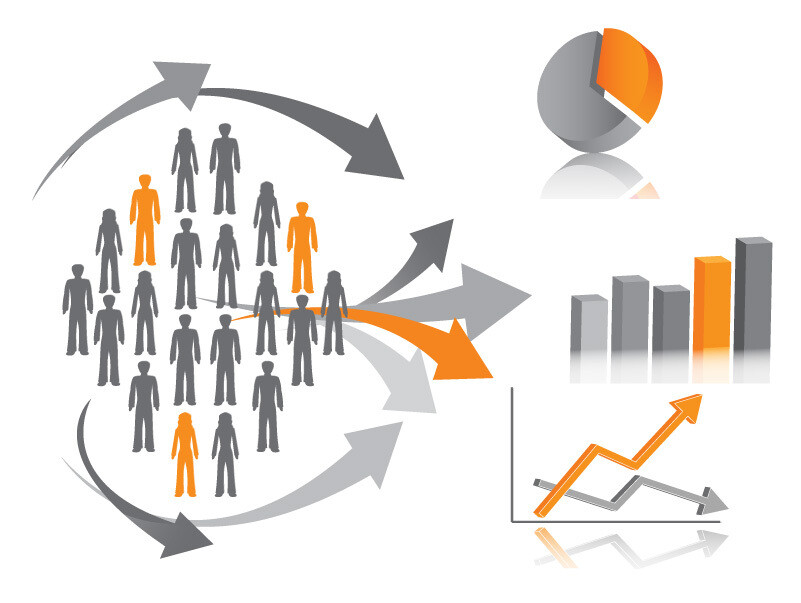If you’re a fan of shows like Shark Tank, you’re probably familiar with the many product pitches that fail. Many fail because of one key answer that the entrepreneur gives to the panel. What is this deadly answer?
Question: “How do you know that this product will be profitable?”
Answer: “Well, it’s a $18 billion market. So even a 1% slice of this massive market is worth $180 million!”
Bzzzz. Failure!
This common mistake represents a mistake that many entrepreneurs are making with data. They feel that the market, as a whole, is all they need to look at, without digging beneath the surface.
Business Intelligence – Giving Context to Market Data
Business intelligence (BI) is the art of digging deeper. By interacting with the market, you collect data points. These could be simple queries from potential customers, or they could be much more advanced interactions via a tool like Typeform. By engaging your market, and looking at how customers interact with your menu of products and services, you can collect specific data that is relevant to what you’re offering.
The size of the market is only important in the beginning – you want to know you’re going after a big pot of gold at the other end of the rainbow. But failing to look further immediately highlights that you’re a lazy data collector. You aren’t willing to dig deep for context.
Net Promoter Score – How Loyal Is Your Customer?
And once you start interacting with the market, you need to take it a step further. You’ve gotten your first few sales. Orders are continuing to role in. Now you need to know how loyal your customers are. In other words, how likely are your customers to return to you? Are some segments of your market more likely to return and purchase from you again, or tell their friends and family about your brand?
In business school, the term Net Promoter Score (NPS) is used to quantify consumer loyalty. The higher your NPS, the better. A higher NPS means that you are gaining a higher ROI from each customer acquisition. In other words, you’d almost certainly rather spend $10 in marketing to convert a customer that is likely to generate $100 in revenue. You probably wouldn’t want to continue spending $10 per conversion if the customers you’re engaging are only spending $5 with your brand.
Without understanding your NPS, it’s impossible to know which customers will be worthy of your limited marketing spend. The ideal customer will spend 5-10 times what you spent in order to earn their business. And they’ll tell a few friends or family members about your brand. The second part is important, because study after study proves that suggestions from a friend are far more powerful than blanket advertising.
Business Intelligence vs. Advanced Analytics
It’s important to understand the difference between BI and advanced analytics. Both involve heavy collection of data. But both terms get mixed up. So, let’s clarify:
Business Intelligence is the understanding of what is occurring. It looks at the past and present. Business Intelligence answers questions like:
- Who bought from us recently?
- What are the demographics of our customer base?
- Which products or services are most popular?
- Where are most of our customers coming from / how are they finding us?
Advanced Analytics involves taking the insights from your BI and applying advanced algorithms to forecast what will occur in the future. Advanced analytics can answer questions like:
- Which types of customers should we try to engage in the future?
- How can we make our future marketing spend more profitable?
- What should we forecast for sales in the next month, quarter or year?
- What changes should we make to our product in order to better satisfy the market?
BI is looking at existing data. AA involves trying to use the data that’s been collected to predict the future and/or guide future decision-making.

How can your company get the data necessary to generate BI and perform Advanced Analysis?
As I mentioned earlier, the easiest way to get your hands-on customer data is by interacting with and engaging your market. The inbound communication that occurs when customers contact your company should be thoroughly documented. You’ll want to pay careful attention to:
- What aspects of your product or service are customers most curious / excited about?
- What is their impression of your brand? Do they trust it, or are they just excited to see something new?
- How are they currently using, or plan to use your product or service?
- What competing solution are they replacing with your product or service?
- What is the customer’s background? Income, geographic location, industry and interests / hobbies are good starting points.
Engaging forms on your landing pages can be a great start. You can also offer an exclusive membership program for your customers. If you allow them to link their social profiles (Facebook, LinkedIn, etc.), you’ll gain additional details that can be imported into your customer database.
Crowdfunding Campaigns
Another powerful strategy for gaining market data is a crowdfunding campaign. By presenting your product concept, you can gauge both your effectiveness at marketing (i.e. grabbing the attention of the market), and how popular your ideas are with your target market.
And then there’s the added bonus of having your first round of production funded by pre-orders. Or, if you fail to gain traction, you can save yourself the cost of putting a dud into production. And because of the social nature of crowdfunding campaigns, you’ll gain significant insights into the types of consumers your concept is attracting.
Inbound communication from customers, whether it’s via an engaging form on a website, or a successful crowdfunding campaign, can help you to reach out and learn about your market. The more comprehensive your consumer data becomes, the more sophisticated your BI and advanced data analysis efforts will be.
It isn’t always easy generating data, but a heavy investment into data collection and storage infrastructure will pay huge dividends. Data-driven decision making is critical to the longer-term success of your brand.






